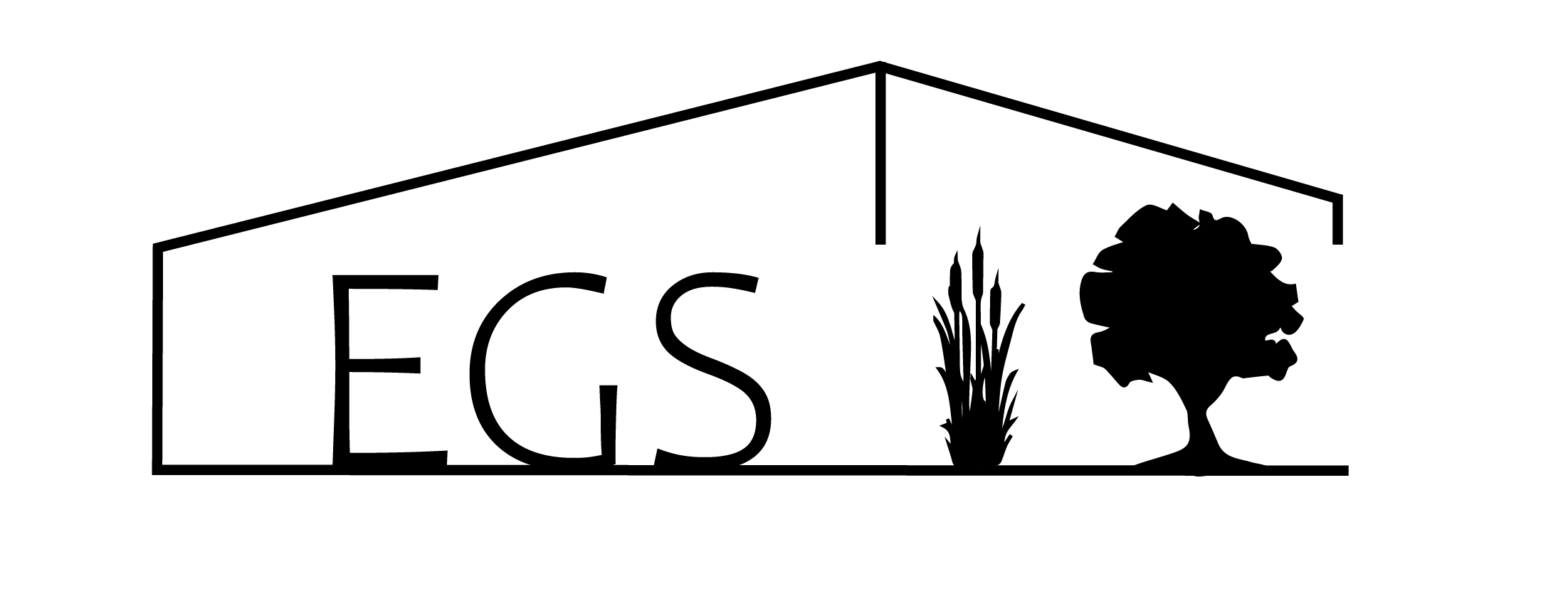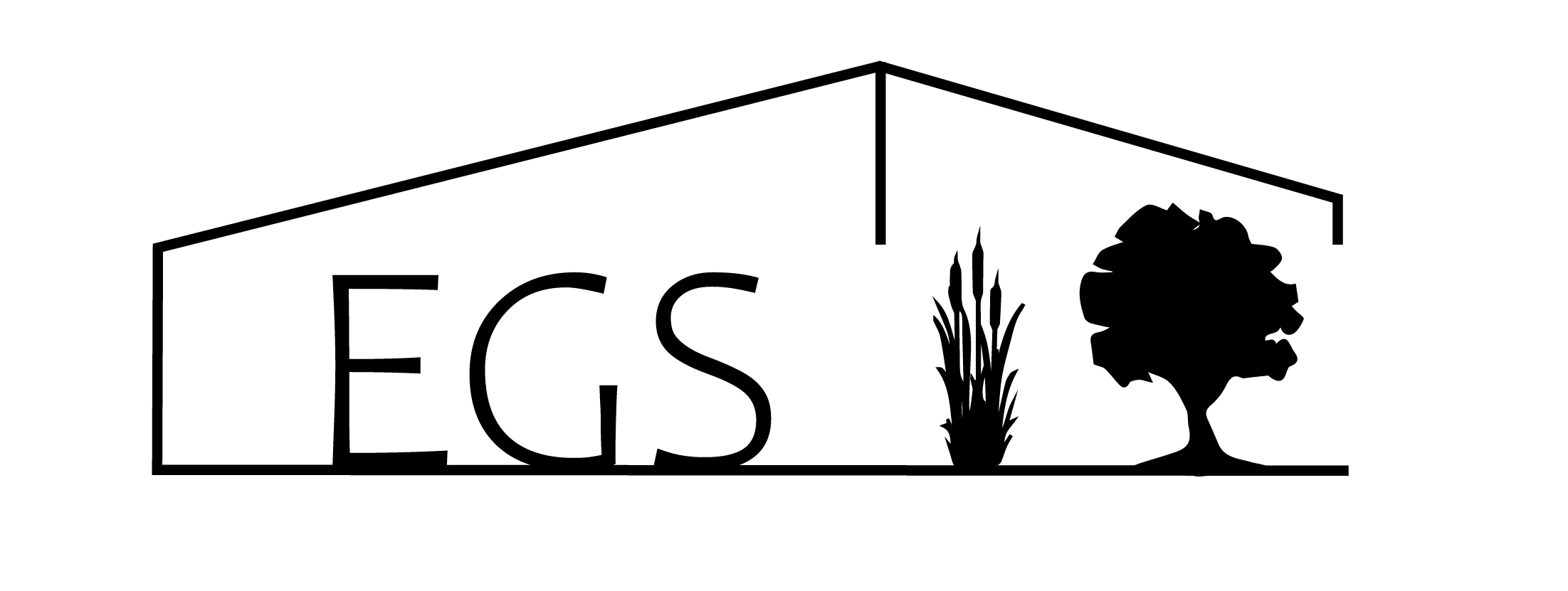Garbage, Greenery, Growth on Floating and Towed Island
LA 234 - Site Design Studio, Prof. Ana Valderama
Module 4, Hybridizing Atmospheres - Etienne Sirois, Johanna Gonzalez
AutoCAD, Photoshop, Physical Modeling, Rhinocerous 3D
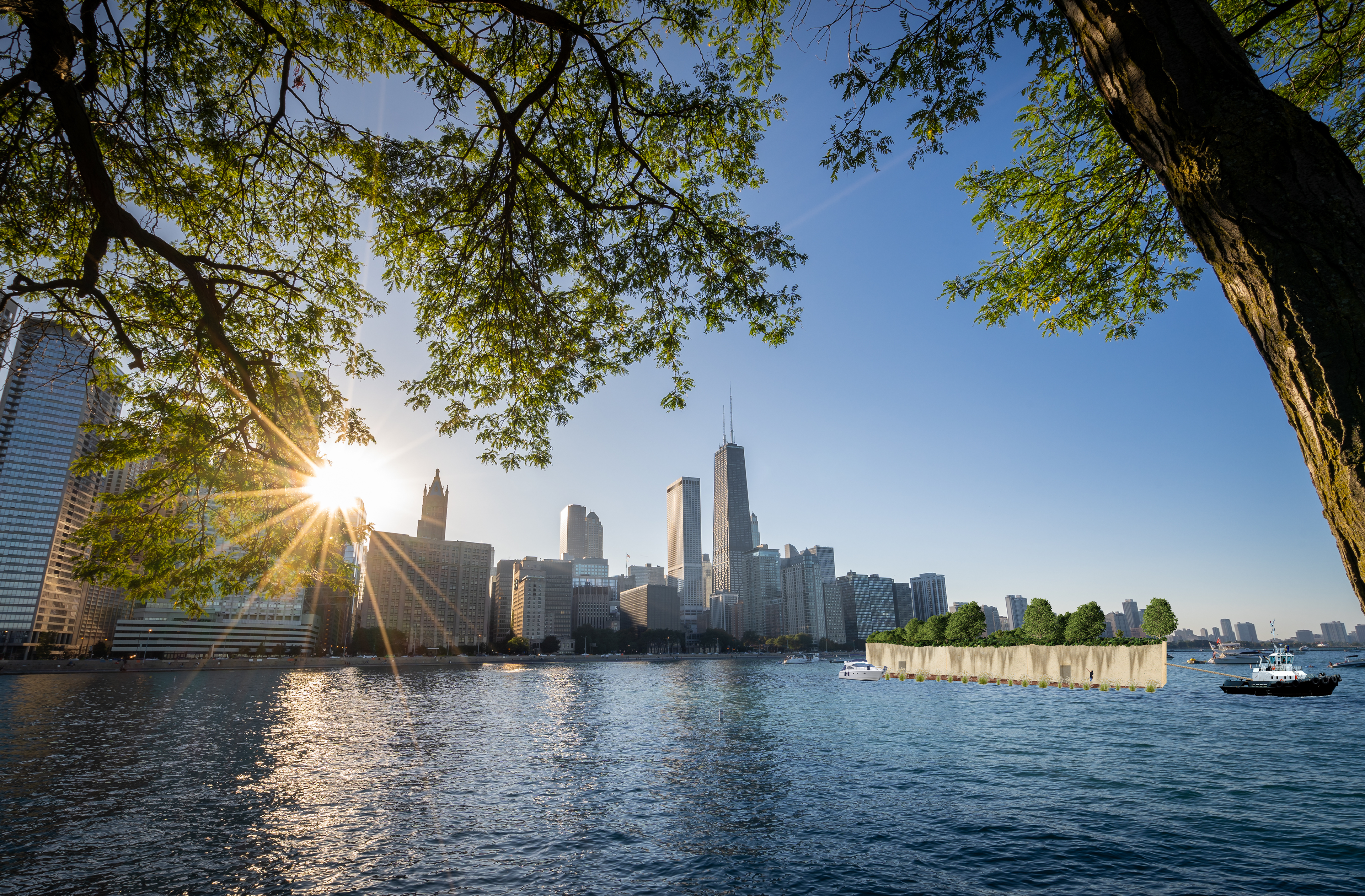
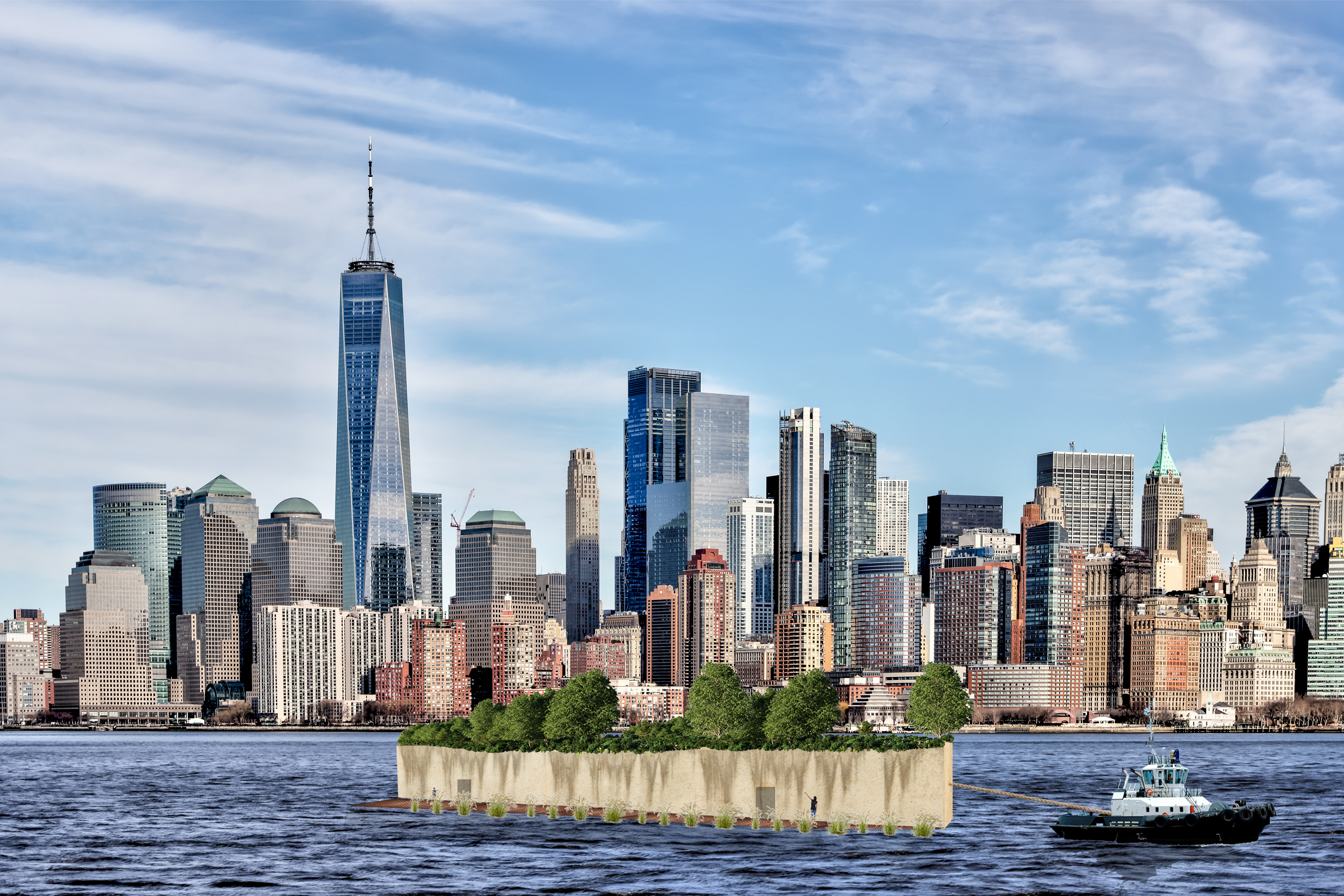
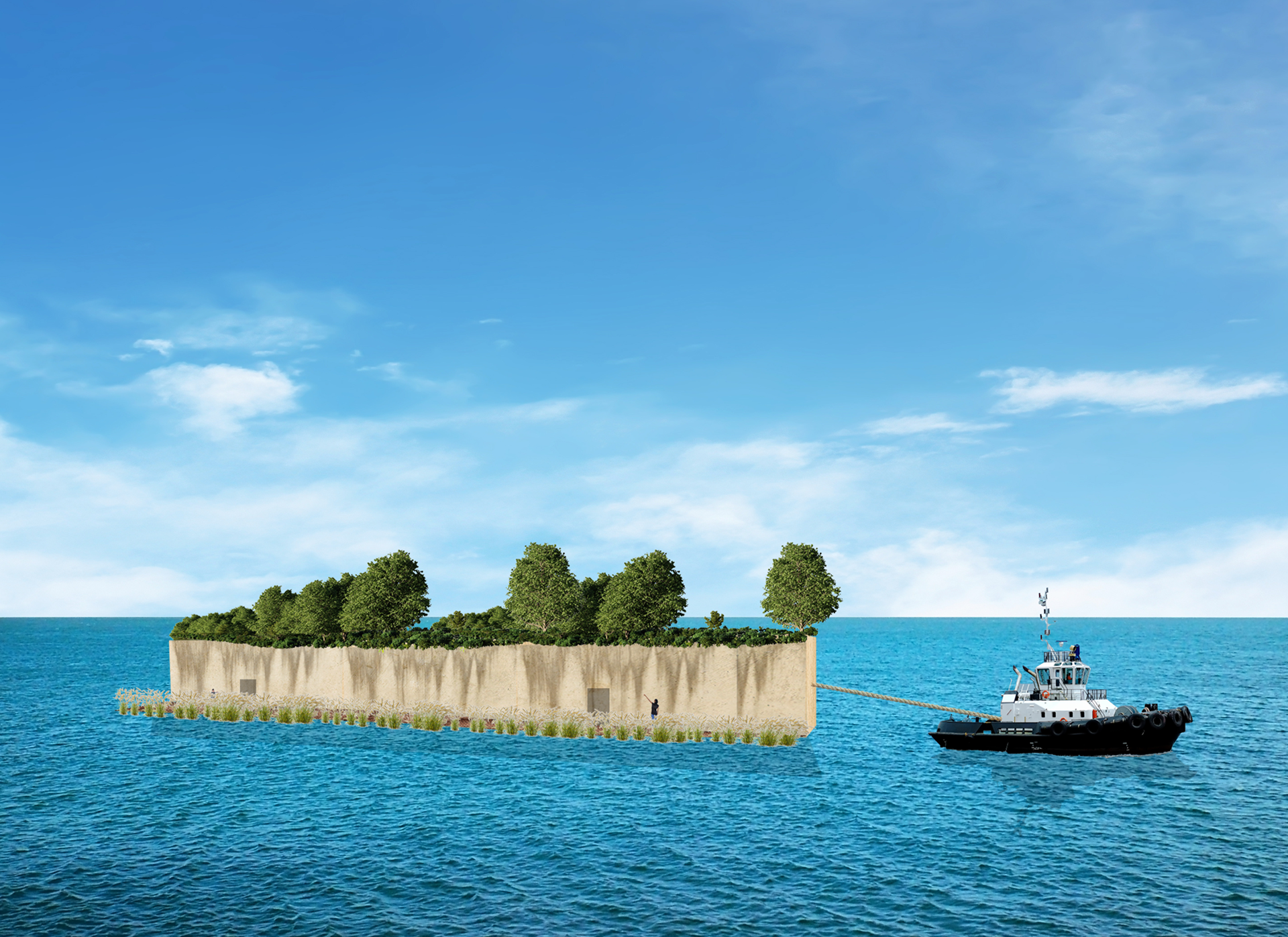
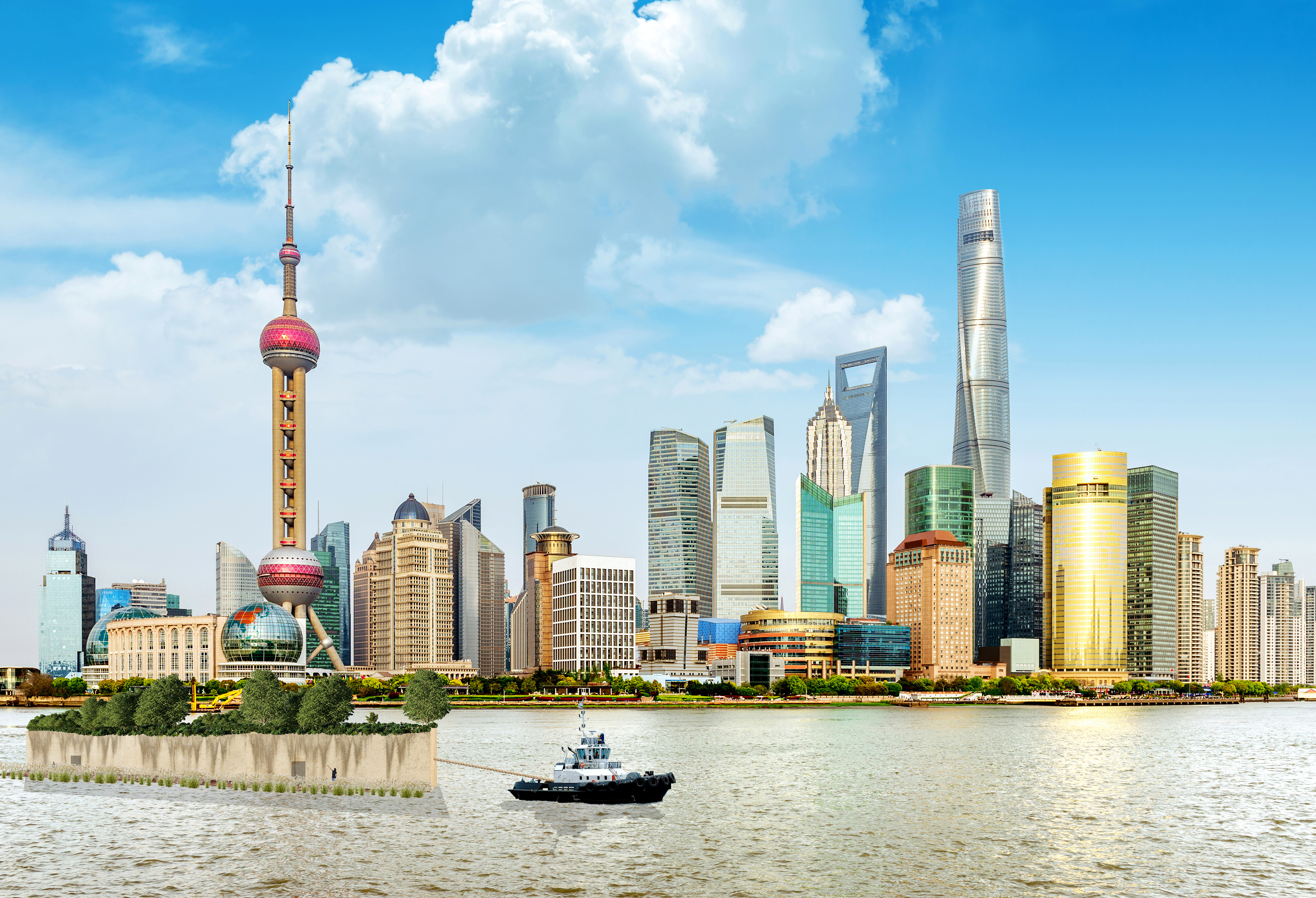
This project proposes a traveling island system as a form of ecological development through the reuse of trash materials, serving as an educational tool and a statement piece for the current scale of the oceanic trash issue.
In its transport through various ports and coastal areas in multiple regions of the world, this design will collect various trash volumes and establish biodiversity with the large variety of plant species collected from different cities.
With the immense issue of trash in oceans, this design enables modularity for multiple islands operating simultaneously in different locations.
On the starboard side of the island, visitors enter through the deck area, which has been designed for optimal hydrodynamics.
Two tunnel entrances allow visitors to choose which environment they experience first.
The interior structures are established with tunnels and open spaces attached to the floating barge.
On the stern side, a large cylindrical expanse is surrounded by a steel and mesh structure, allowing visitors to see the accumulations of trash outside the protected area. A ramp extending around the edges of this shape allows visitors to witness the different types of garbage up close as they ascend, eventually reaching the top to view the otherwise off-limits area.
Moving away from the stern, visitors enter a tunnel that takes them to a conservatory space where a curated selection of plant species and hardscaping provides a more comfortable experience, shielded from the exterior trash.
Within the collection of trash and soil installation on top, micro-organisms, fungi, worms, bacteria, and other composting organisms will be prominent in the subsurfaces, working to contribute to a dynamic ecosystem and decompose the trash.
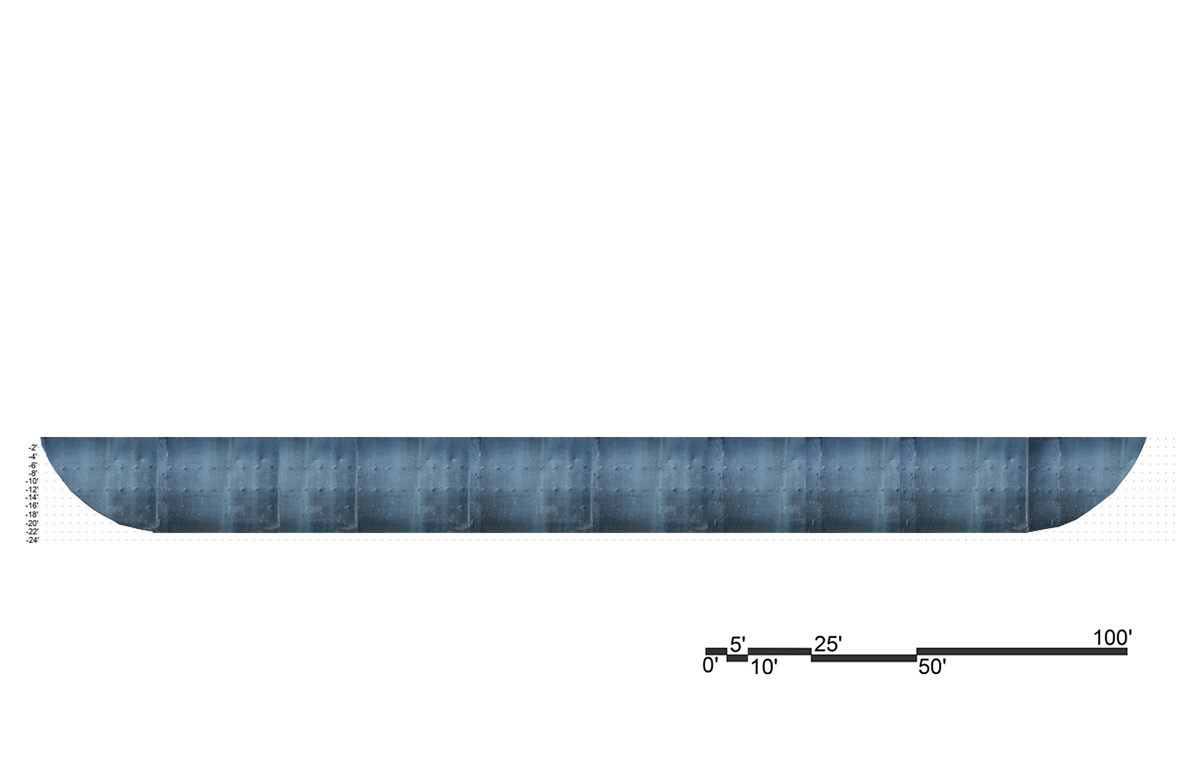
The hull of the vessel is fabricated with steel and air compartments
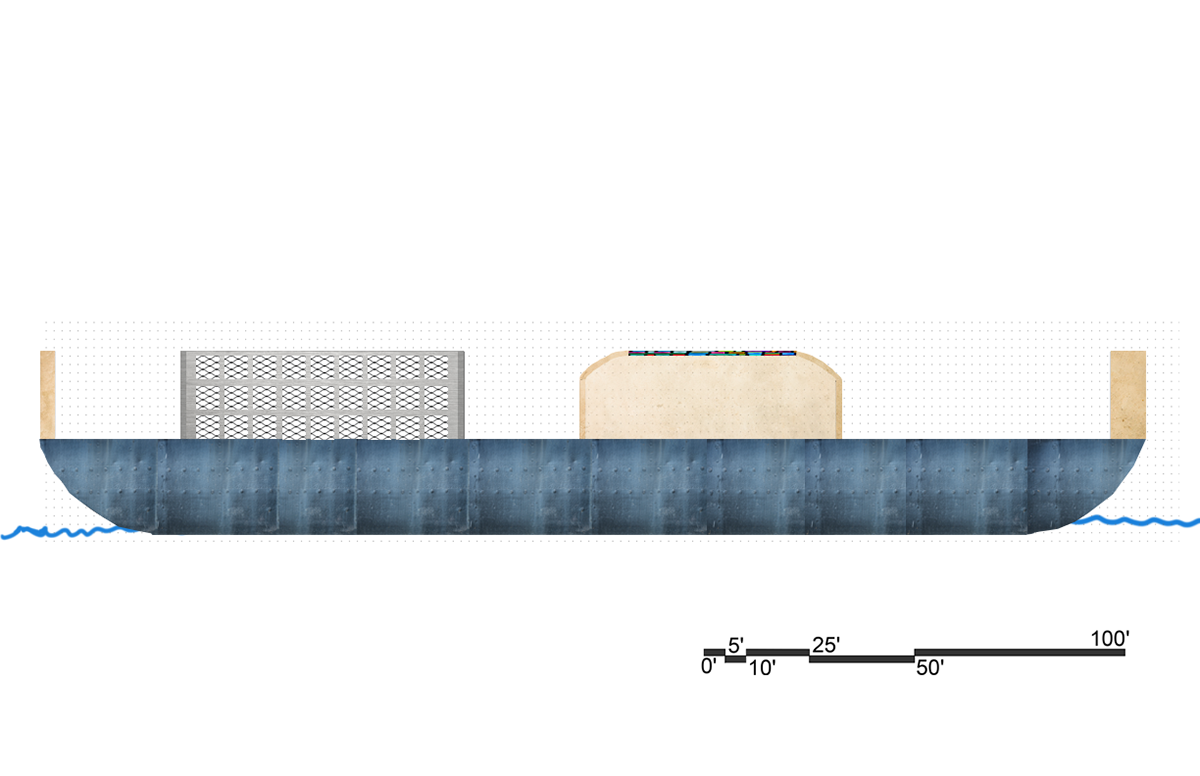
Concrete walls around the edges are built to 21 ft high
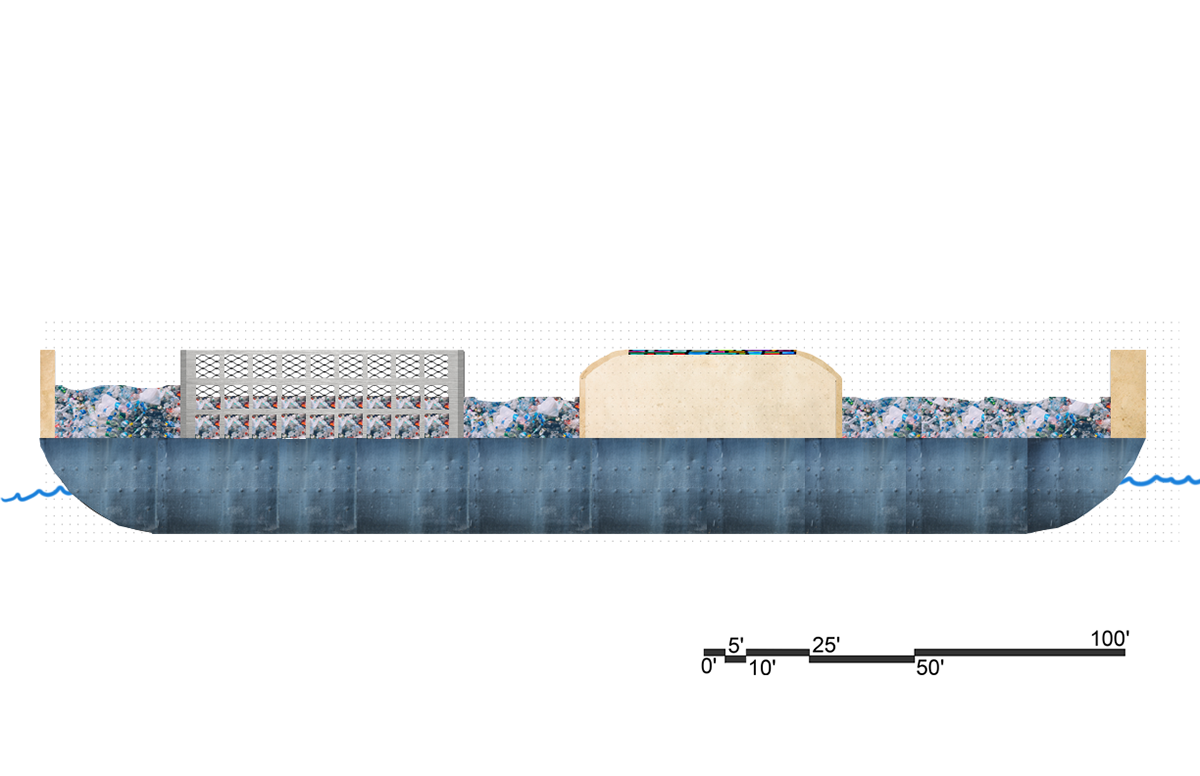
Interior structures within the building are constructed
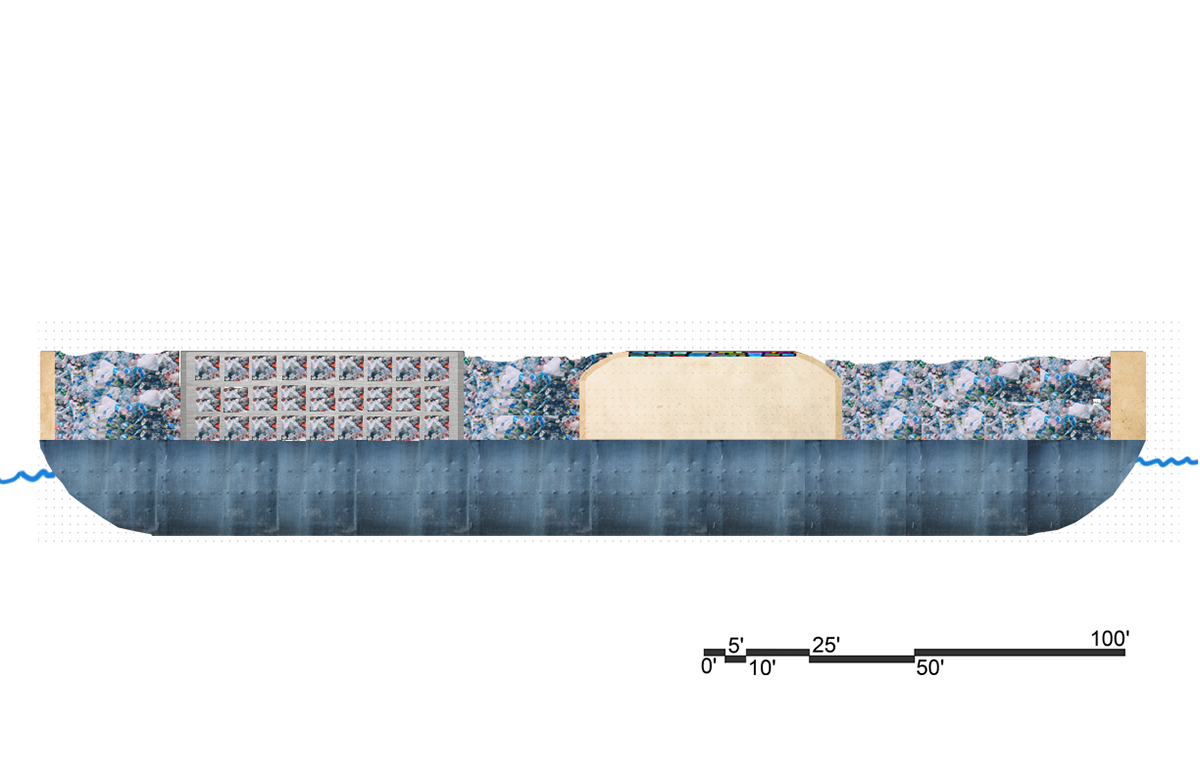
Trash is loaded in from different locations
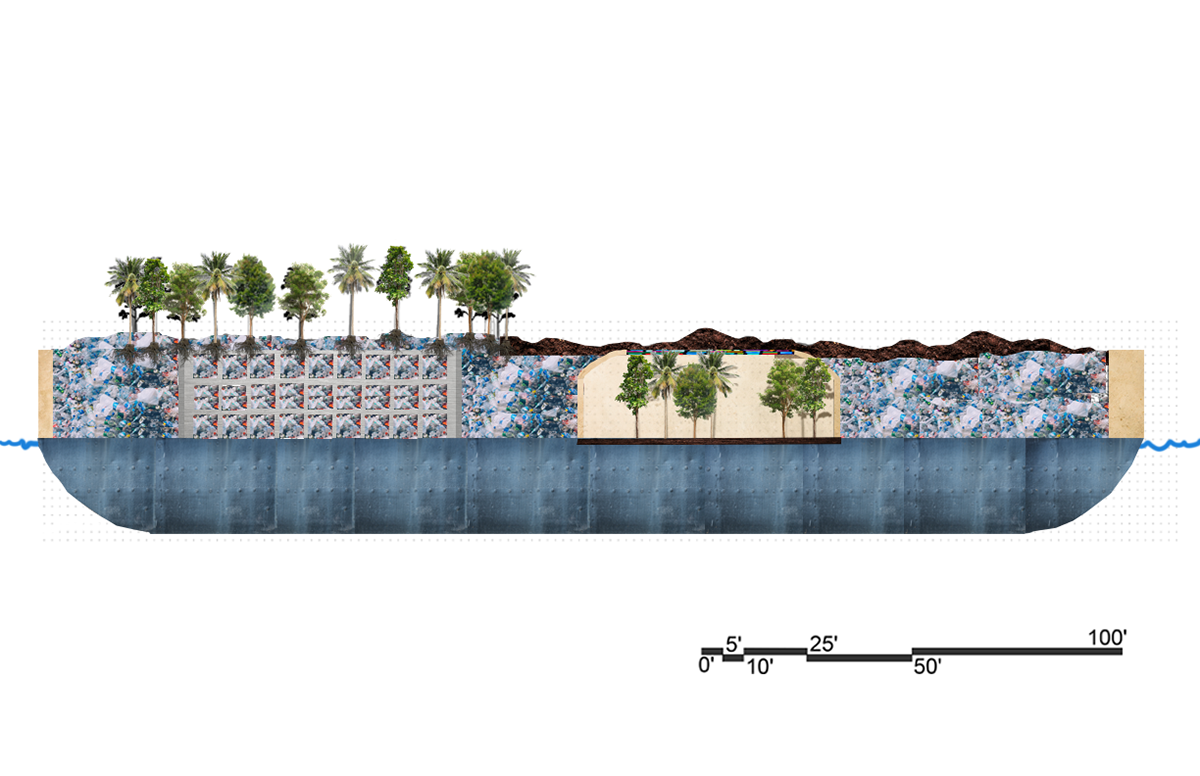
Light soil is added to the top and seedlings are placed on the garbage
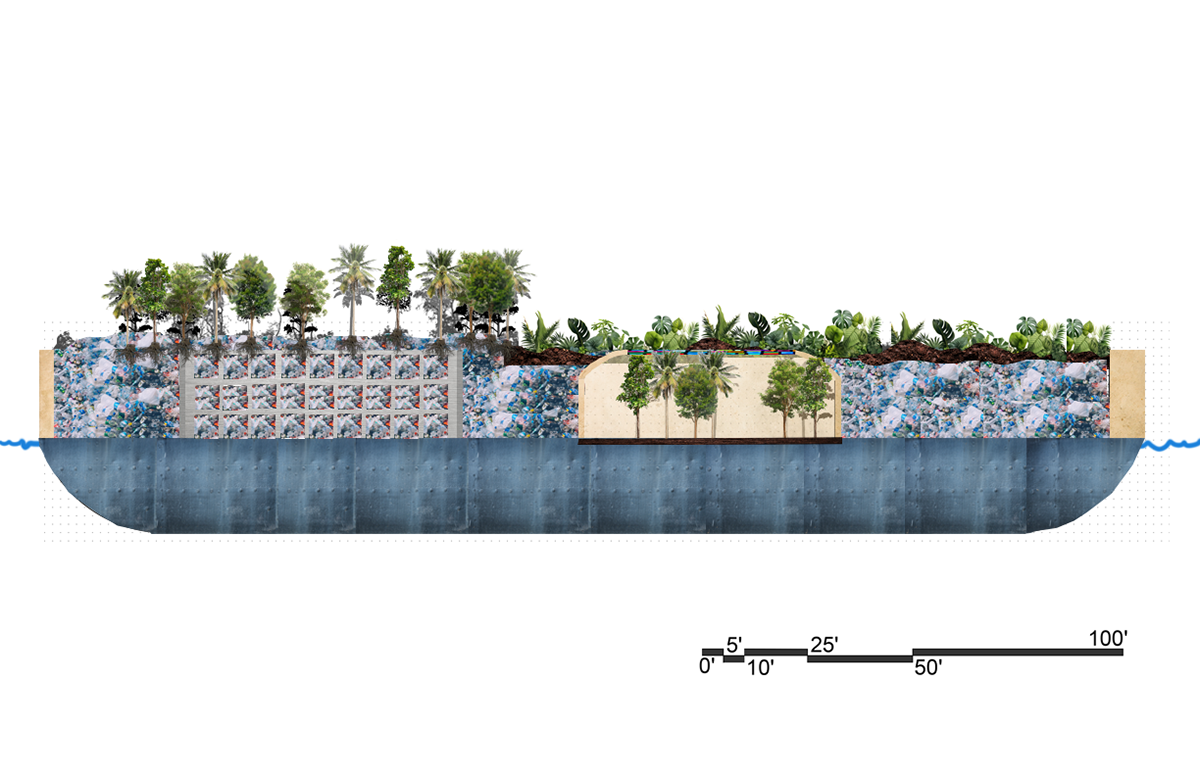
Interior plants and hardscaping are added
Spatial design is guided by the rewilding nature of the selected plants for the island
Throughout the season, plants will transform and different textures will be exposed.
This design allows for visitors to experience both the typically visible and invisible elements of nature and life processes
Trash collected is repurposed as a growing medium.
Rootscape of trees extend through the waste and help to decompose the trash present on the island.
Different layers of life in the islands imitate real life systems and as various plants are collected and grown together, relationships between different species will vary.
This hybridization of the different plants will create a distinct, yet connected island.
As organic material like trees and other herbaceous plants grow, some will die and contribute to the growth of new life in a cyclical process.
Trash within the island will settle, compress, and decompose, lowering the overall level of trash overtime and eventually enabling the structure to be refilled as necessary.
A variety of educational opportunities are possible with this design, including visitors learning about the massive scale of this issue, general waste education such as recycling, what types of trash different cities produce, and learning about the integrated plant ecosystems.
As the island moves around, collections of seeds and seedlings that are culturally significant from each port location will be planted within the conservatory and on top of the trash.
To better handle the immense issue of trash in oceans, this design is modular, allowing for scalability. In smaller regions, such as rivers, the island can be pulled by a tugboat. For transoceanic travel and more effective trash harvesting especially in the Great Pacific Garbage Patch, the island can be scaled to be at the front of an open-body transport ship for greater effect.
Variation between the units will create unique island experiences with each production iteration.
Due to the basic structural elements of this barge, this project has immense potential to be replicated in multiple regions throughout the world
As more and more of the island units are complete throughout various regions, they can be grouped into cohesive parks that are situated outside of cities.
In addition, as the individual modules move around the world, the islands will become important spaces of biodiversity studies, understanding the relationships between the various plant species.
With issues with garbage in waterways growing, the need for education about waste and sustainable places to store the garbage will also grow, and this design seeks to fill this important void.
